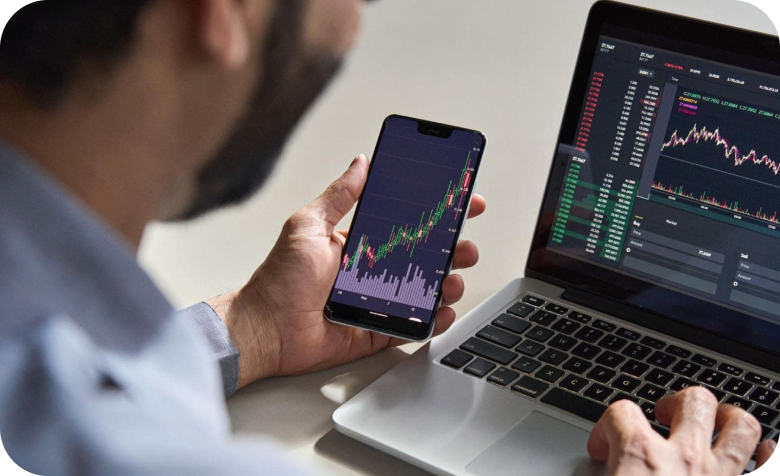- Education
- Forex Technical Analysis
- Technical Indicators
- Trend Indicators
- Moving Average of Oscillator
Moving Average of Oscillator - OsMa Indicator
What is OsMa Indicator
How to Use OsMa Indicator
The OsMa is displayed as a histogram - up or down from the zero line. The values of OsMa are positive, if MACD is above the signal line, and negative, if MACD is below the signal line.
Extremum points:
- OsMA switching from falling to rising in extreme areas may be a sign of bullish reversal;
- OsMA switching from rising to falling may be a sign of bearish reversal.
Crossing zero axis:
- OsMA rising above zero (corresponds to MACD crossing from below its signal line) generates a buy signal;
- OsMA falling below zero (corresponds to MACD crossing from above its signal line) generates a sell signal.

Moving Average of Oscillator (OsMA) Indicator
OsMa Indicator Formula
The moving average of oscillator is calculated as the difference between the oscillator and its signal line.
OsMa Indicator Formula is:
OsMA = MACD – Signal
How to use Moving Average of Oscillator in trading platform
Forex Indicators FAQ
What is a Forex Indicator?
Forex technical analysis indicators are regularly used by traders to predict price movements in the Foreign Exchange market and thus increase the likelihood of making money in the Forex market. Forex indicators actually take into account the price and volume of a particular trading instrument for further market forecasting.
What are the Best Technical Indicators?
Technical analysis, which is often included in various trading strategies, cannot be considered separately from technical indicators. Some indicators are rarely used, while others are almost irreplaceable for many traders. We highlighted 5 the most popular technical analysis indicators: Moving average (MA), Exponential moving average (EMA), Stochastic oscillator, Bollinger bands, Moving average convergence divergence (MACD).
How to Use Technical Indicators?
Trading strategies usually require multiple technical analysis indicators to increase forecast accuracy. Lagging technical indicators show past trends, while leading indicators predict upcoming moves. When selecting trading indicators, also consider different types of charting tools, such as volume, momentum, volatility and trend indicators.
Do Indicators Work in Forex?
There are 2 types of indicators: lagging and leading. Lagging indicators base on past movements and market reversals, and are more effective when markets are trending strongly. Leading indicators try to predict the price moves and reversals in the future, they are used commonly in range trading, and since they produce many false signals, they are not suitable for trend trading.
Use indicators after downloading one of the trading platforms, offered by IFC Markets.

Not sure about your Forex skills level?
Take a Test and We Will Help You With The Rest


